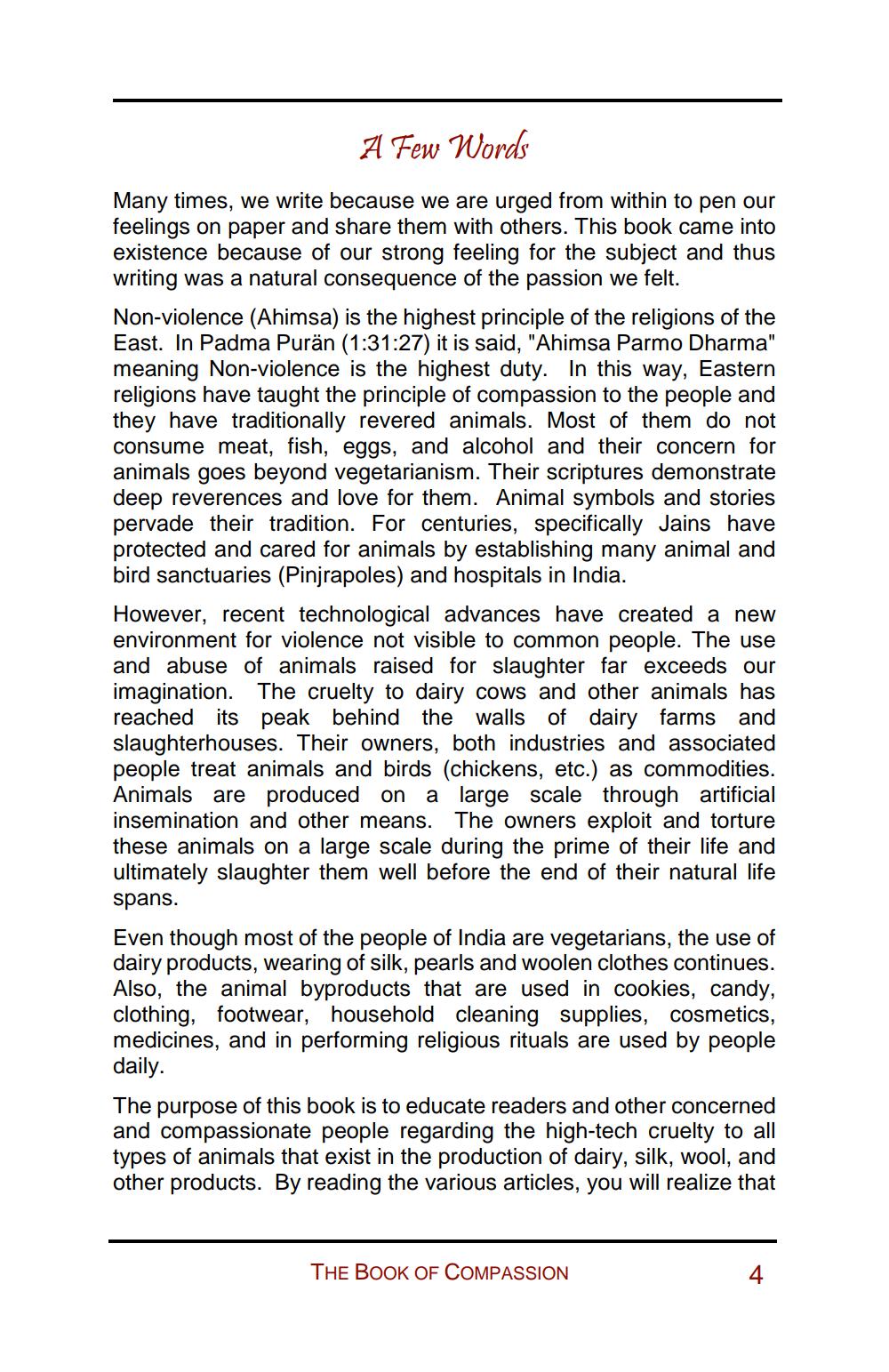________________
A Few Words
Many times, we write because we are urged from within to pen our feelings on paper and share them with others. This book came into existence because of our strong feeling for the subject and thus writing was a natural consequence of the passion we felt.
Non-violence (Ahimsa) is the highest principle of the religions of the East. In Padma Purän (1:31:27) it is said, "Ahimsa Parmo Dharma" meaning Non-violence is the highest duty. In this way, Eastern religions have taught the principle of compassion to the people and they have traditionally revered animals. Most of them do not consume meat, fish, eggs, and alcohol and their concern for animals goes beyond vegetarianism. Their scriptures demonstrate deep reverences and love for them. Animal symbols and stories pervade their tradition. For centuries, specifically Jains have protected and cared for animals by establishing many animal and bird sanctuaries (Pinjrapoles) and hospitals in India.
However, recent technological advances have created a new environment for violence not visible to common people. The use and abuse of animals raised for slaughter far exceeds our imagination. The cruelty to dairy cows and other animals has reached its peak behind the walls of dairy farms and slaughterhouses. Their owners, both industries and associated people treat animals and birds (chickens, etc.) as commodities. Animals are produced on a large scale through artificial insemination and other means. The owners exploit and torture these animals on a large scale during the prime of their life and ultimately slaughter them well before the end of their natural life spans.
Even though most of the people of India are vegetarians, the use of dairy products, wearing of silk, pearls and woolen clothes continues. Also, the animal byproducts that are used in cookies, candy, clothing, footwear, household cleaning supplies, cosmetics, medicines, and in performing religious rituals are used by people daily.
The purpose of this book is to educate readers and other concerned and compassionate people regarding the high-tech cruelty to all types of animals that exist in the production of dairy, silk, wool, and other products. By reading the various articles, you will realize that
THE BOOK OF COMPASSION




